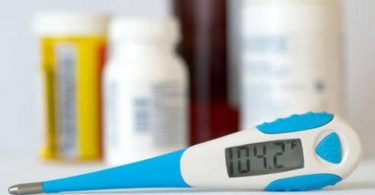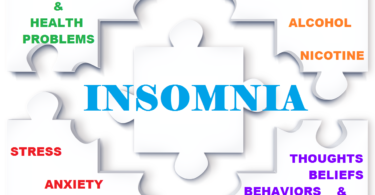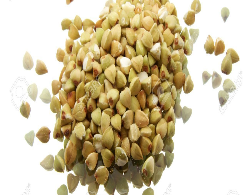Authors:
Dr. Shishir Mathur, Dr. Rajesh Kumawat, Ms. Meenal Saini
Abstract
Hypertension is one of the leading causes of global burden of disease. Approximately 7.6 million deaths and 92 million disability were reported in year 2001 .Hypertenstion doubles the risk of cardiovascular diseases, including coronary arterial disease (CAD), congestive heart disease (CHD), ischemic and hemorrhagic stroke, renal failure, and peripheral arterial disease. High blood pressure before age 55 occurs 3.8 times more frequently among persons with a positive family history of hypertension. In children and adolescents, blood pressure is associated with growth and maturation. Homoeopathy treatment is based on individualization and patient is treated as a whole entity rather than treatment for hypertension
Key words
Hypertension, Congestive Heart Disease, Renal failure, Homoeopathic therapeutics
Abbreviations
CAD -coronary arterial disease, CHD -congestive heart disease, National Health And Nutrition Examination Survey [NHANES], angiotensin -converting enzyme (ACE), Multiple Risk Factor Intervention Trial (MRFIT),sodium chloride (NaCl), deoxyribonucliec acid (DNA).
Introduction
Hypertension, also known as high blood pressure. It is the lateral pressure exerted by flowing blood on the walls of arteries. In ICD-9, essential hypertension was coded using 401.0 (malignant), 401.1 (benign), or 401.9 (unspecified). ICD- 10 uses only a single code for individuals who meet criteria for hypertension and do not have co morbid heart or kidney disease. That code is 110, essential (primary) hypertension..1 Blood is carried from the heart to all parts of the body in the vessels. Each time the heart beats ,it pumps blood into the vessels .Blood pressure is created by the force of blood pushing against the walls of blood vessels (arteries) as it is pumped by the heart.2 In every case of Hypertension there is an increase in peripheral resistance .This increased peripheral resistance may be due to spasm of the arterioles , or due to the narrowing of their channels on account of thickening of their walls. Peripheral resistance may also be increased due to the interference with capillary circulation in the kidneys, or due to the inflammation of these organs. 3 In the united states, based on result of the National Health And Nutrition Examination Survey [NHANES], approximately 30% of adults, or at least 65 million individuals have hypertension. Recent evidence suggests that the prevalence of hypertension is increasing, possibly as a consequence of increasing obesity. Among populations, hypertension prevalence is related to dietary NaCL intake, and the age-related increase in blood pressure may be augmented by a high NaCL intake. Low dietary intakes of calcium and potassium may also contribute to the risk of hypertension. Several strategies are being used in the search for specific hypertension -related genes. Current evidence suggests that genes that encode components of the renin-angiotensin -aldosterone system, along with angiotensinogen and angiotensin -converting enzyme (ACE) polymorphism, may be related to hypertension and to blood pressure sensitivity to dietary NaCl. In the future, it is possible that DNA analysis will predict individual risk for hypertension and target Organ damage and will identify responders to specific classes of anti-hypertensive agents. In adults, there is a continuous, incremental risk of cardiovascular disease and renal disease across levels of the both systolic and diastolic blood pressure. The Multiple Risk Factor Intervention Trial (MRFIT), which included >350,000 male participants, demonstrated a continuous and graded influence of both systolic and diastolic
blood-pressure on CHD mortality, extending down to systolic blood pressures of 120 mmHg. A recent classification recommends blood pressure criteria for defining normal blood pressure, prehypertension, hypertension (stages I and II), and isolated systolic hypertension, which is frequent among elderly.
Blood pressure classification
| Sl.no. | Blood Pressure Classification | Systolic, mmHg | Diastolic, mmHg |
| 1 | Normal | <120 | And <80 |
| 2 | Prehypertension | 120-139 | Or 80-89 |
| 3 | Stage 1 hypertension | 140-159 | Or 90-99 |
| 4 | Stage 2 hypertension | ≥160 | Or ≥100 |
| 5 | Isolated systolic hypertension | ≥140 | And <90 |
Source: Adapted from AV Chobanian et al: JAMA 289:2560, 2003.
Recommended criteria for a diagnosis of hypertension, based on 24-h blood pressure monitoring, are awake blood pressure ≥135/85 mmHg and asleep blood pressure ≥120/75 mmHg
Treatment
Lifestyle interventions
Implementation of lifestyles that favourably affect blood pressure has implications for both the prevention and treatment of hypertension. Dietary modifications that effectively lower blood pressure are weight loss reduced NaCL intake, increased potassium intake, moderation of alcohol consumption. Blood pressure may be lowered by 30 min of moderately intense physical activity, such as brisk walking ,6-7 days a week, or by more intense, less frequent workouts 4.
Homoeopthic view point
Homoeopathic physicians on the other hand, considers disease as a disturbance of the life force, made known to him only through signs and symptoms. He understands that the patient is prior to the localization of disease. The Hypertension, like other diagnosis, is considered only as a part of the whole 5.
Although homoeopathic treatment is individualize and based on totality of person as a whole ,there are certain repertoriers where we find ‘HYPERTENSION’ as rubric ,like -LOTUS MATERIA MEDICA by Robin Murphy and A CONCISE REPERTORY OF HOMOEOPATHIC MEDICINES BY Dr S.R Phatak. In lotus materia medica by Robin Murphy total 118 medicines are mention under this rubric out of which 10 are of highest grade 6 .A Concise Repertorial of Dr S. R Phatak ,total 16 medicines are mentioned.9
LESSER KNOWN HOMOEOPATHIC MEDICINES FOR HYPERTENSION
Following are some homoeopathic medicines which can be used in cases of hypertension , not getting fit into totality. These medicines are effective but are not frequently used by practitioners.
1. Lycopus (Bugle weed):
Morrisson made an extensive proving of lycopus and developed unmistakable heart symptoms. Lowers the blood pressure, reduces the rate of the heart and increases the length of systole to a great degree.6 It is indicated in diseases with tumultuous action of the heart and more or less pain7.Cardiac irritability with depressed force .This may be found with organic disease as well as without . 8
2. Strophanthus hispidus (Kombe seed):
It is a muscle poison; it increases the contractile power of all striped muscles especially the heart7.It acts on the heart increasing the systole and diminishing the rapidity.3 May be used with advantage to tone the heart, and run off dropsical accumulations.7 Especially useful in failing compensation dependent upon fatty heart. After the long use of stimulants. Arteriosclerosis, rigid arteries of aged.6
3. Adrenalin:
Its chief therapeutic use depends on its vaso-constriction action. It appears to possess a very powerful local action over dilated blood vessels.6 Useful in Arterio-sclerosis and blood pressure. Vertigo, nausea and vomiting are prominent.3
4. Tabacum nicotiana:
Produces high tension and arteriosclerosis the coronary arteries. Angina pectoris with coronary sclerosis and high tension.6 Dilatation of heart caused by shock or violent physical exertion.7 unsteady heartbeat.9
5. Spartium scorpariums:
Spartien sulphate increases the strength of the heart, slows it and reduces the blood pressure. It lowered the systolic and diastolic pressures in the provers. It weakens the cardiac contraction.7 Used palliatively in physiological dosage to combat arterial hypertension.
6.Adium bromatum:
Constriction. Wakes with palpitations. Low blood pressure.7 Pulse, rapid, irregular, fluttering.9
6. Sumbulus moschatus:
It affects heart causing nervous palpitation.9 High blood pressure due to arteriosclerosis. Pulse irregular. Cardiac asthma.8 A tissue remedy for sclerosed arteries. Pulse irregular.7
7. Terminarie arjuna:
It has been used as a cardiac tonic since the ancient times by Ayurvedic physicians, it has been used in both functional and organic diseases of the heart like angina, palpitation and weakness of the heart.10
A great heart remedy. Highly effective in cases of high blood pressure, with vertigo, palpitation and a sense of mental and physical exhaustion.3 Cardiac asthma.10
8. Boerhaavia diffusa:
Palpitation with dyspnoea. Hypertension with palpitation, Blurred vision and profuse perspiration, <stretching the arms, pressure, changing position, evening, bending forward. Increased blood pressure with ringing in ears and heat of vertex.10
10 . Adonis vernalis:
It is a herbal heart tonic .Indications include rapid and feeble action of the heart. It acts predominantly on the heart when it is affected after rheumatism, influenza. Low vitality with weak heart and slow , weak pulse.6 It is useful in lowering arterial pressure.3
11. Viscum album:
In middle ages, it was used as an hypo-tensor, anti -epileptic. Lowered Blood pressure.6 It acts on lowered blood pressure with dilated blood pressure but does act on the centres of medulla. Pulse is slow due to central irritation of the vagus.l0
12. Strontium carbonicum:
High blood pressure with a flushed face, pulsating arteries and threatened apoplexy. Arteriosclerosis. Restlessness at night , smoothering feeling.7 Dull, intermitting pressure in precordial region.6
13.Allium sativa:
Allium sativa has vaso-dilatory properties .Thus, it has a reputation of lowering the blood pressure. Leaping beats of the heart 6.Arterial hypotension begins usually in 30 to 45 minutes after twenty to forty drop doses of the tincture .7
REFERENCES
1.Beckmen KD. Essential hypertension. [Available from:https://www.aafp.org/fpm/2014/0300/p5.html
2.World health organization. Hypertension [homepage on the internet].Available from:https://www.WHO.int/health-topics/hypertension/
3. Banerjee NK. Blood pressure-its etiology and treatment: B jain publisher;2016.
4. Kasper DL, Hauser SL, Jameson JL ,et al. Harrison principles of internal medicine,2015;p.1611-1622.
5.Acharya T. Clinical verification of ten rare homoeopathic medicines in the treatment of hypertension. 6.Murphy R. Lotus materia medica; b jain publishers:2016
7. Boericke W. Boerickes new manual of homoeopathic materia medica with repertory; Bjain publishers;2018
8.Kent J.T. Lectures on homoeopathic materia medica;b jain publishers;2017
9. Phatak S.R. Materia medica of homoeopathic medicines; b jain publishers;2016
10. Homoeopathic materia medica of Indian drugs[Available from: www.ccrhindia.org]
About the Authors
1.Dr. Shishir mathur
Professor and Vice principal,
Department of Physiology and Biochemistry, Dr.M. P. K. H. M. C and R.C., Constituent college of Homoeopathy University, Jaipur, Rajasthan.
2.Dr. Rajesh Kumawat
Asst. Professor , Department of Physiology and Biochemistry, Dr.M. P. K. H. M. C and R.C., Constituent college of Homoeopathy University, Jaipur, Rajasthan.
3. Ms. Meenal Saini
Intern
Dr. M.P.K.H.M.C and R.C., Constituent college of Homoeopathy University, Jaipur, Rajasthan.





